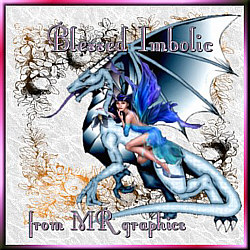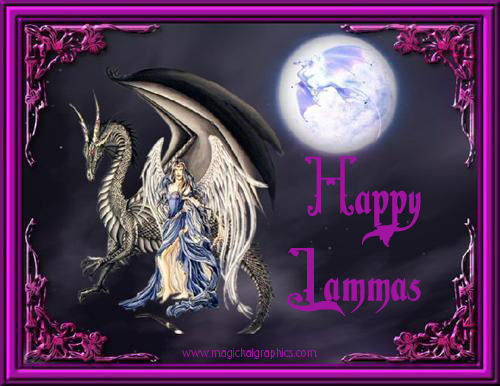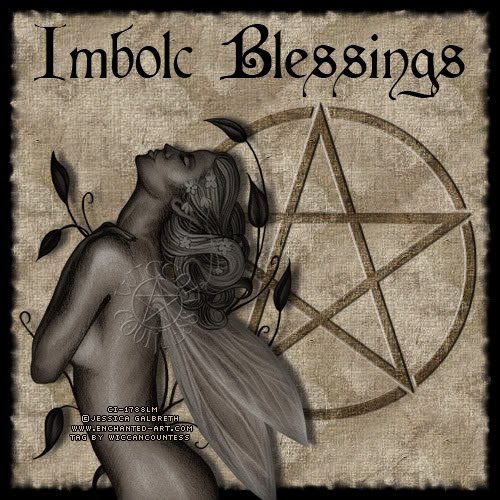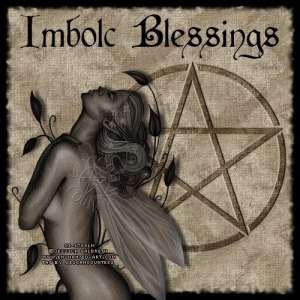
Lammas/Lughnasdh in Australia
Lammas (2nd February)
Lammas is the traditional time of Harvest, and preparation for the coming winter months, celebrated on the 2nd of February in the Southern hemisphere, and on the 2nd of August in the Northern hemisphere.
Lammas is awareness of the approach of winter, and thanksgiving for the year’s harvest. The name Lammas derives from the Old English Hlaf-Mass, which means “bread feast”.
Lammas is traditionally the festival where the first loaf of bread from the harvest is broken and shared in the name of the Goddess. All crops associated with bread are sacred to this time, in particular barley. The drinks of the season are beer, ale, cider, and all things brewed.
In Australia, Lammas is an ideal Sabbat to spend down the beach on hot summer evenings, sipping cool drinks and honouring Mother-Sea by appreciating and respecting her cooling waves. Lammas is a harvest not only of crops, but of all that we have sown through the year, and so it is a good time to wander the beaches with a garbage bag, cleaning up the mess that thoughtless people have left behind, and doing our best to restore Mother-Sea to her natural glory.
Unfortunately, part of the harvest at this time is also the sad and distressing harvest that animal charities face when inundated with unwanted animals that had been Christmas presents just a few weeks earlier. Lammas is a good time to emphasize the importance of all Her creatures by supporting animal charities with donations of time and/or money. In this way, we can help ease the lives of unwanted animals and, when necessary, help with their passing into the next world where they will hopefully find true love and companionship according to their kind.
Lammas is the celebration of harvest, and ties in with Lughnassadh, the Celtic festival in honor of the Sun God, which is held on the 7th of February in the Southern hemisphere, and the 7th of August in the North. Tradition tells that the Sun King gives his energy to the crops to ensure life while the Mother prepares to transform into her aspect as the Crone.
Lammas is the time to teach and to share the fruits of our achievements. The baking of bread, the gathering of seed for the next year’s sowing, and the making of corn dolls are all traditional at Lammas. The altar is decorated with loaves of freshly baked bread, corn dolls and wreaths, and the fruits and vegetables of the harvest. Lammas is a time to share, be thankful for our blessings, and be joyful for the blessings that are to come.
Lammas is also known as Cornucopia (Italy/Latin) and Thingtide (Teutonic).
Source: https://aussiewytch.wordpress.com/sabbats/lammas/lammaslughnasdh-in-australia/
Imbolc in Northern Hemisphere

Imbloc (Candlemass, Imblog, Imbole) – February 2nd
Pronounced: EE-Molc
Incense: Rosemary, Frankincense, Myrrh, Cinnamon
Decorations: Corn Dolly, Besom, Spring Flowers
Colours: White, Orange, Red
This holiday is also known as Candlemas, or Brigid’s (pronounced BREED) Day. One of the 4 Celtic “Fire Festivals. Commemorates the changing of the Goddess from the Crone to the Maiden. Celebrates the first signs of Spring. Also called “Imbolc” (the old Celtic name).
This is the seasonal change where the first signs of spring and the return of the sun are noted, i.e. the first sprouting of leaves, the sprouting of the Crocus flowers etc. In other words, it is the festival commemorating the successful passing of winter and the beginning of the agricultural year. This Festival also marks the transition point of the threefold Goddess energies from those of Crone to Maiden.
It is the day that we celebrate the passing of Winter and make way for Spring. It is the day we honour the rebirth of the Sun and we may visualize the baby sun nursing from the Goddess’s breast. It is also a day of celebrating the Celtic Goddess Brigid. Brigid is the Goddess of Poetry, Healing, Smithcraft, and Midwifery. If you can make it with your hands, Brigid rules it. She is a triple Goddess, so we honour her in all her aspects. This is a time for communing with her, and tending the lighting of her sacred flame. At this time of year, Wiccans will light multiple candles, white for Brigid, for the god usually yellow or red, to remind us of the passing of winter and the entrance into spring, the time of the Sun. This is a good time for initiations, be they into covens or self-initiations.
Imbolc (February 2) marks the recovery of the Goddess after giving birth to the God. The lengthening periods of light awaken Her. The God is a young, lusty boy, but His power is felt in the longer days. The warmth fertilizes the Earth (the Goddess), and causes seeds to germinate and sprout. And so the earliest beginnings of Spring occur.
This is a Sabbat of purification after the shut-in life of Winter, through the renewing power of the Sun. It is also a festival of light and of fertility, once marked in Europe with huge blazes, torches and fire in every form. Fire here represents our own illumination and inspiration as much as light and warmth. Imbolc is also known as Feast of Torches, Oimelc, Lupercalia, Feast of Pan, Snowdrop Festival, Feast of the Waxing Light, Brighid’s Day, and probably by many other names. Some female Witches follow the old Scandinavian custom of wearing crowns of lit candles, but many more carry tapers during their invocations.
IMBOLC LORE
It is traditional upon Imbolc, at sunset or just after ritual, to light every lamp in the house – if only for a few moments. Or, light candles in each room in honour of the Sun’s rebirth. Alternately, light a kerosene lamp with a red chimney and place this in a prominent part of the home or in a window.
If snow lies on the ground outside, walk in it for a moment, recalling the warmth of summer. With your projective hand, trace an image of the Sun on the snow.
Foods appropriate to eat on this day include those from the dairy, since Imbolc marks the festival of calving. Sour cream dishes are fine. Spicy and full-bodied foods in honour of the Sun are equally attuned. Curries and all dishes made with peppers, onions, leeks, shallots, garlic or chives are appropriate. Spiced wines and dishes containing raisins – all foods symbolic of the Sun – are also traditional.













